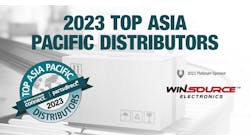Purchasing strategies at North American-based electronics companies could change in the next several years as more OEMs transition manufacturing from China back to Mexico or the United States.
Some companies have decided to bring back electronics manufacturing to North America because of ever-increasing labor rates in China and higher costs of shipping products from Asia to end markets.
In addition, some companies are deciding to insource rather than have products built by electronics manufacturing services (EMS) providers. Recent examples of this include Apple and Lenovo. Those companies have decided to make at least some of their computers in house.
An increase in manufacturing in the North American market will affect sourcing strategies. Buyers involved in outsourcing decisions will need to evaluate the manufacturing and supply chain capabilities of EMS providers doing business in North America. Buyers at companies that have decided to insource may need to find new suppliers or further strengthen relationships with existing ones in Mexico and the United States.
Distributors will benefit
North American-based distributors will likely benefit from the transition of electronics manufacturing back to Mexico as OEMs and EMS providers will need them more not just for parts, but for a variety of design, supply chain management and aftermarket services.
Many in the industry call the trend “onshoring” or “re-shoring.” However, Eric Miscoll, principal at electronics outsourcing consultancy Charlie Barnhart and Associates, says such terms are political. He says the terms have an “us versus China” connotation.
“We see the trend, but we don't use those terms. The trend is regionalization,” says Miscoll. With regionalization, electronics equipment is manufactured in the market in which the product will be sold.
“We look at capacity utilization data” for the electronics industry, adds Miscoll. “Over the last few years, the geographies which are growing (in terms of electronics manufacturing) are Mexico, Eastern Europe and Malaysia. China is stable. The data indicates that regionalization is indeed a trend.”
Electronics manufacturing is growing in Mexico because the country has the lowest labor rates of the three North American countries and transportation costs to ship products to the United States and Canada are much less than shipping the products from China.
Miscoll adds that more electronics OEMs are regionalizing their manufacturing, especially low-to- mid-volume, high-mix production, which includes industrial equipment and appliances. High-volume consumer electronics equipment, notebook computers and cell phones that will be sold globally will continue to be built in China and other low-cost Asian countries.
“In some cases, that low-volume, high-mix manufacturing should have not been in China in the first place and is now transitioning back,” says Miscoll. He adds that OEMs that manufacture low-volume, high-mix products are the most dissatisfied with China.
Manufacturing of such equipment had moved to China because electronics OEM executives wanted to take advantage of extremely low labor rates about eight to 10 years ago, but they apparently did not take into account the true total cost of manufacturing in China, says Miscoll.
“People were sipping the Kool-Aid and thought there was endless cost-down available to them over there,” says Miscoll. “There wasn’t.”
In recent years, labor rates in China have increased 20% per year—and they will continue to rise—so labor cost advantages have greatly lessened, if not disappeared. In addition, transportation costs from Asia have increased significantly as the price of oil has risen in recent years.
It is uncertain exactly how much electronics manufacturing will migrate back to North America. However, the trend will continue as labor costs in China and other Southeast Asian countries continue to rise for the foreseeable future.







